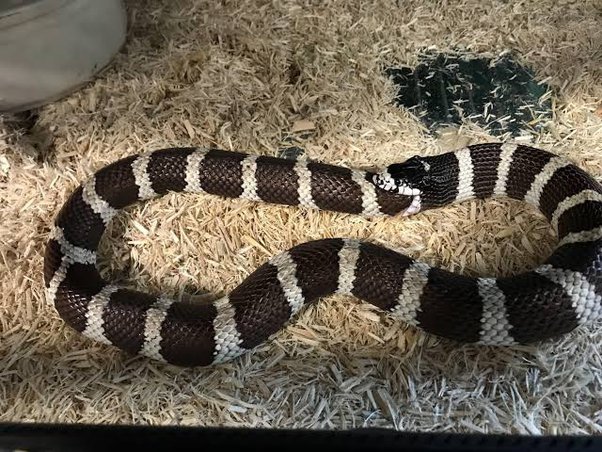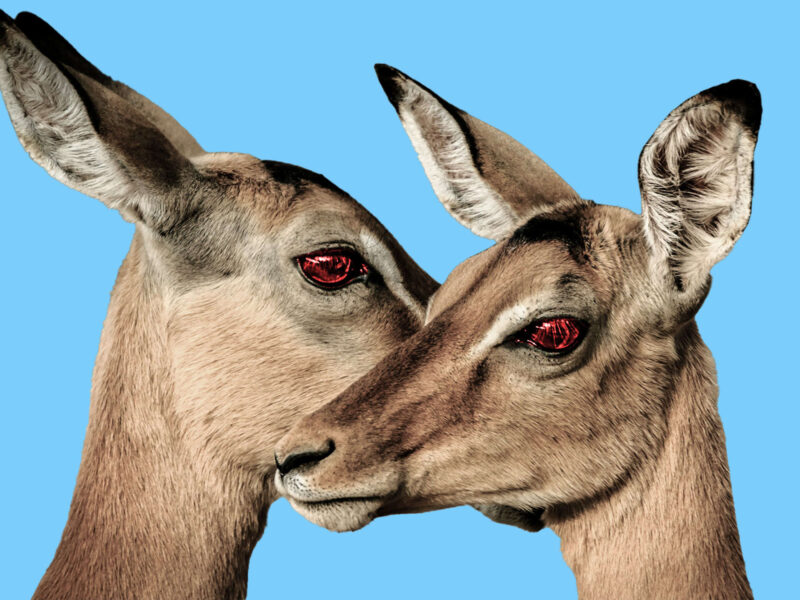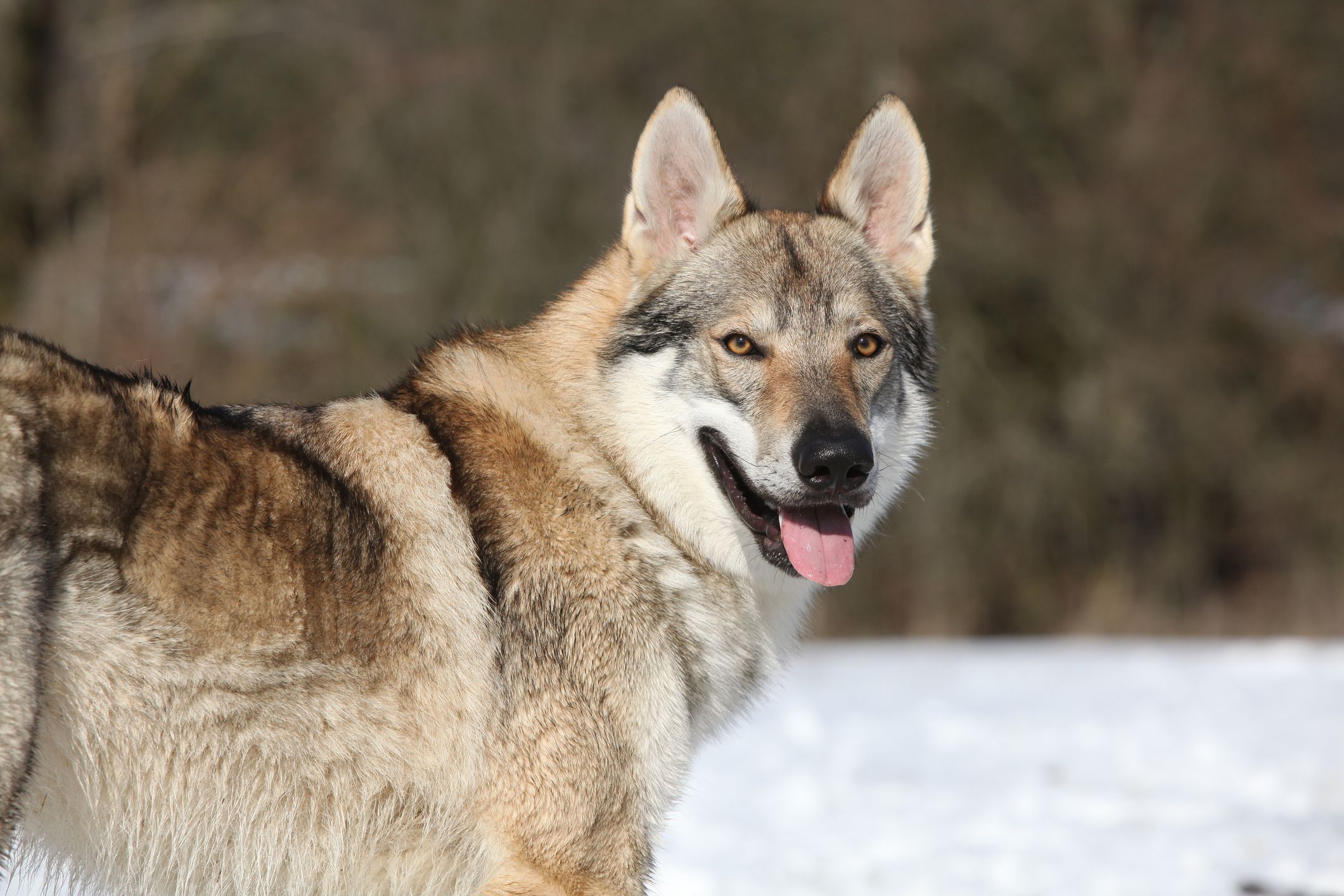Snakes eating themselves, also known as autophagy or self-cannibalism, is a rare behavior and usually occurs under stressful conditions or when they’re extremely hungry. It’s not a normal behavior for snakes and is often a result of disorientation, confusion, or starvation.
In some cases, when a snake is severely stressed or ill, they may become disoriented and mistake their own tail for prey. This behavior is generally harmful to the snake and can lead to injury or death if not intervened upon.
It’s important for snake owners to ensure their pets are provided with proper care, including adequate feeding and environmental enrichment, to prevent such behaviors.
What triggers self-cannibalism in snakes?
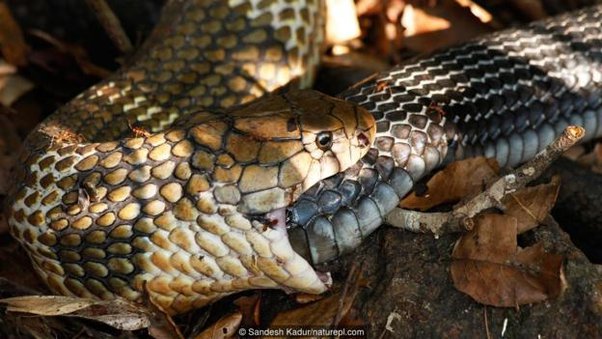
Self-cannibalism in snakes, also known as autophagy, can be triggered by a variety of factors, often related to stress or captivity. Some of the common triggers include:
When snakes are kept in captivity and not provided with adequate food, they may resort to self-cannibalism out of desperation to survive. In captivity, snakes may be housed together in limited space. Overcrowding can lead to stress, competition for resources, and ultimately, cannibalistic behavior.
Changes in environmental conditions such as temperature, humidity, or lighting can stress snakes, leading to abnormal behavior including self-cannibalism.
Snakes that are injured or sick may exhibit aberrant behaviors, including cannibalism. In some cases, they may consume their own damaged tissues.
Changes in hormonal levels, particularly during breeding seasons, can sometimes trigger abnormal behaviors in snakes, including cannibalism.
Although less common, some snakes may cannibalize their own species due to predatory instincts, especially if they perceive other snakes as prey.
How do various factors contribute to snake self-cannibalism?
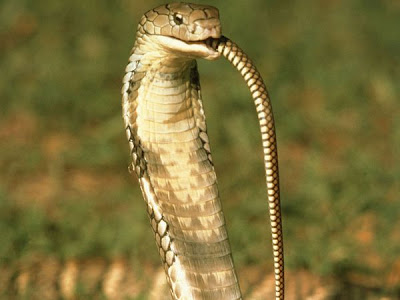
Snake self-cannibalism, also known as autophagy, can occur in captivity due to various factors:
Hunger
Snakes are ectothermic creatures, meaning their metabolic rate is influenced by environmental temperature. Consequently, they can go for extended periods without eating, but when food is scarce, they may resort
to drastic measures.
In captivity, improper feeding schedules or insufficient prey availability can lead to hunger-induced stress, driving snakes to consume themselves as a last resort to satisfy their nutritional needs.
Stress
Snakes are sensitive to their surroundings, and stressful conditions can trigger a range of behavioral responses, including self-harming behaviors like self-cannibalism.
Factors such as loud noises, frequent handling, overcrowding in enclosures, or the presence of predators (real or perceived) can all contribute to heightened stress levels in captive snakes.
Illness or Injury
When snakes are injured or sick, they may exhibit abnormal behaviors as a response to pain or discomfort. Self-cannibalism can sometimes be an attempt to remove damaged tissue or alleviate suffering.
In cases of severe injury or illness, the snake’s instinctual drive to survive may lead it to consume parts of its own body in a misguided attempt to heal or alleviate symptoms.
Habituation
Captive snakes may develop abnormal behaviors through habituation, where they associate certain stimuli with feeding or other activities.
If a snake repeatedly encounters its own scent or taste due to shedding skin, shedding behavior, or incidental self-biting, it may develop a learned association that leads to self-cannibalism.
Malnutrition
A diet lacking essential nutrients or improper feeding practices can result in malnutrition in captive snakes.
Snakes may resort to self-cannibalism in an effort to obtain vital nutrients missing from their diet, especially if they are experiencing deficiencies in key vitamins, minerals, or proteins.
Abnormalities
Genetic mutations or developmental abnormalities can manifest in various ways in snakes, including behavioral abnormalities.
Some snakes may be predisposed to self-cannibalistic behavior due to neurological or physiological abnormalities that affect their perception or response to environmental stimuli.
Imprisonment
Confinement in inadequate enclosures can have detrimental effects on snake welfare, both physically and psychologically.
Limited space, lack of environmental enrichment, and suboptimal habitat conditions can contribute to stress and behavioral abnormalities, including self-cannibalism, as the snake’s natural behaviors are suppressed or distorted.
What are the consequences of snake self-cannibalism?
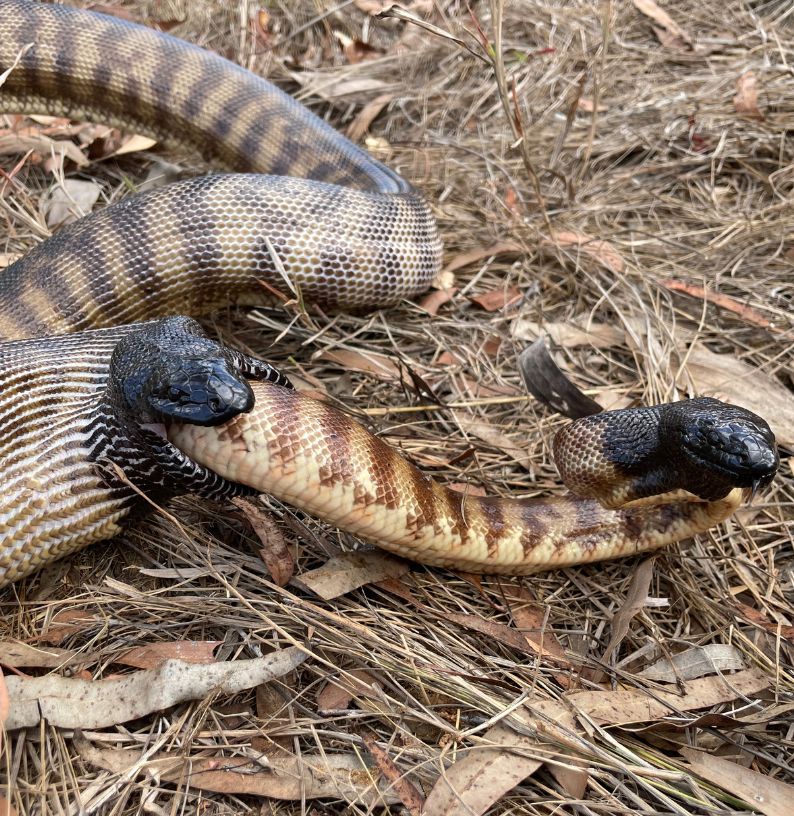
Snake self-cannibalism can have several significant consequences, both for the individual snake and for those responsible for its care. Firstly, it often results in severe physical injury to the snake, including tissue damage, lacerations, and loss of body parts. Biting and consuming their own flesh can lead to open wounds, which are susceptible to infection, potentially exacerbating the snake’s health problems.
Such infections can lead to systemic illness, septicemia, and even death if left untreated, further compromising the snake’s health and well-being. Additionally, self-cannibalism can result in the loss of limbs, tail segments, or other body parts essential for locomotion, balance, and other vital functions, impairing the snake’s mobility and overall functionality.
Moreover, engaging in self-harming behaviors like self-cannibalism can indicate significant psychological distress or abnormality in the snake, potentially leading to chronic stress and anxiety if left unaddressed. These cumulative effects can ultimately shorten the snake’s lifespan and have a distressing impact on caretakers, who may feel helpless or guilty about their inability to prevent or alleviate the behavior.
Furthermore, incidents of self-cannibalism in captive snakes can reflect poorly on the reputation of individuals, organizations, or facilities responsible for their care and may even lead to legal repercussions in cases of neglect or mistreatment.
Final Words
We talked about why snakes sometimes eat themselves. It’s not common and happens when snakes feel very stressed, hungry, or sick. They might get confused and think their tail is food. This can hurt them a lot or even make them die.
To stop this, snake owners should give them good food, keep them calm, and check on them often. That way, we can keep our snake friends safe and healthy.

